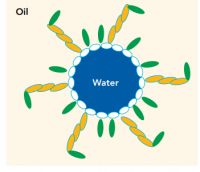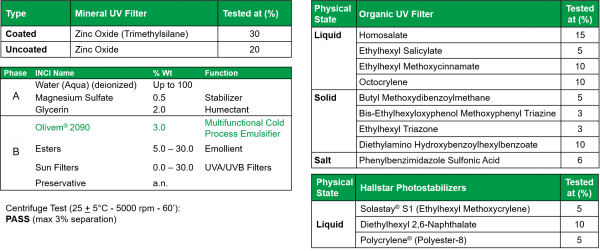Promotional Features
Can advanced technology overcome W/O emulsions’ biggest challenges?
The supposition that formulating water-in-oil emulsions is inherently more difficult than oil-in-water emulsions has become established wisdom in the cosmetic chemistry world. That has certainly influenced U.S. formulators, for example, who are much more likely to opt for O/W emulsions in the creation of beauty products. O/W systems do offer some key advantages and perhaps fewer manufacturing challenges, but W/O systems offer other benefits and ultimately more versatility. Thus, we could benefit from examining the assumed challenges of W/O systems and then seeing if technological advances offer a way to mitigate these difficulties and make W/O emulsions’ benefits more obtainable.
- Assumption #1: W/O emulsions cannot deliver the light sensorial profile customers want.
W/O emulsions have a reputation for being overly thick and tacky. In addition, many common emulsifiers do not have the correct compatibility with the pigments used, resulting in non-homogenous dispersions.
- Assumption #2: The instability resulting from mismatched polarity of oil or sensitivity to coalescence make W/O emulsions especially tricky
Unlike O/W systems, the polarity of the oils used in the oil phase greatly influences the stability of the emulsion, and the performance of high-polarity vs. low-polarity oils will be significant. If the polarity of the oil phase does not match that of the emulsifier, the emulsion will not be stable. Further, attractive forces between water droplets can lead to coalescence and increased instability. (Note that adding salts to W/O emulsions can reduce this problem.)
- Assumption #3: High energy is required for a stable W/O emulsion.
The use of high energy is what controls dispersion particle size within an emulsion. Without a sufficient level of shearing speed, for example, the emulsion will suffer from poly-dispersion, which can in turn lead to instability.
Fortunately, modern advances in esterification chemistry allow for the creation of a new generation of emulsifiers that provide more easily attained stability with improved aesthetis, lower energy requirements and a more natural profile. Hallstar Beauty recently introduced Olivem 2090 (INCI: Polyglyceryl-4 Olivate/Polyricinoleate), a 100% natural-derived, cold process W/O emulsifier offering exceptional performance and excellent sensorial and hydration benefits for multiple applications.
Hallstar’s expertise in olive oil chemistry enabled the development of this unique ingredient, combining the emulsifying properties of polyglycerol esters of polyricinoleic acids and the skin benefits of olive oil fatty acids.
- Sensoriality: In comparison to more traditional emulsifiers used in equal percentages, Olivem 2090 gives an exceptional lightness and spreadability associated with fast absorption, high skin softness and silky after-feel.
- Stability: Olivem 2090 creates a homogeneous layer that surrounds water droplets and confers high stability to the emulsion.
Furthermore, it enjoys high compatibility with every type of oil and preservative and allows a reduction in the quantity of oil necessary to obtain a good dispersion of powders. It improves the wettability of inorganic UV filters like TiO2 and ZnO and perfectly emulsifies all organic filters.
- Energy-saving (as well as cost- and time-saving): W/O emulsions can be obtained with cold or hot processes, making Olivem 2090 a very versatile ingredient.
Olivem 2090 has the added benefit of broad compatibility with sun care ingredients tested at a standard percentage. Its sensoriality along with W/O emulsions’ innate waterproof properties make it an ideal emulsifier to develop light sunscreens.
Hallstar Beauty’s goal with Olivem 2090 was to create a single, unique and functionalized molecule – not a blend or mixture. So not only does Olivem 2090 satisfy marketing’s preference for natural ingredients that can ‘greenify’ a formulation, it also has the additional advantage of a short, ‘clean’ INCI name.
By using Olivem 2090, it is possible to achieve completely natural, elegant water-in-oil emulsions with biometic properties and a light skin feel for a broad range of applications. Download the product brochure detailing Olivem 2090’s clinical results here.




